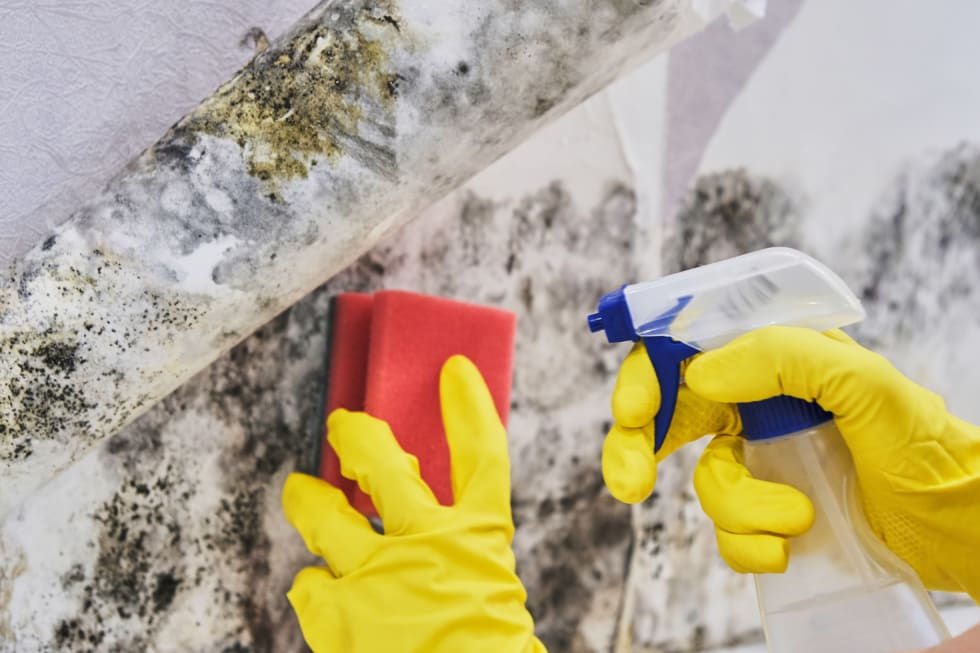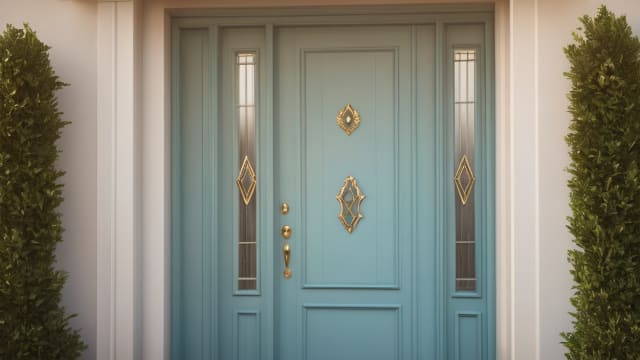The Ultimate Guide to Mold-Free Bathrooms: DIY and Professional Tips for Renters
Introduction
Facing the challenge of how to remove mold on bathroom walls? You’re not alone. This common plight affects many people who rent, transforming what should be your tranquil retreat into a source of stress. The presence of mold in the bathroom can pose significant health and aesthetic concerns, which is why it’s up to you to take prompt action.
But here’s the good news! Whether you’re confronting a small outbreak or a full-blown mold invasion, effective solutions are within reach. This guide will walk you through DIY cleaning techniques crafted from everyday household products, pinpoint when professional help might be your best bet, and offer preventative strategies to ensure mold doesn’t make an unwelcome return.
Understanding Mold: Causes and Common Areas
Why does mold find bathrooms so irresistible? The answer lies in the environment: mold thrives in damp, dark, and poorly ventilated spaces. Bathrooms, with their frequent use of water and often limited airflow, provide the perfect breeding ground for these pesky fungi.
Here are some mold hotspots in your bathroom to keep an eye on:
-
Tile Grout: Those tiny lines between your tiles can harbor more than just soap scum. Mold loves to settle in here, feeding off the moisture that lingers after your morning shower.
-
Wall Corners: Often overlooked during a quick clean, these nooks can accumulate moisture, providing a cozy corner for mold to grow.
-
Shower Curtains and Liners: These are like a welcome mat for mold, especially if they’re left damp and crumpled.
-
Under the Sink: A leaky pipe in this out-of-sight area creates a mold paradise.
-
Ceiling and Exhaust Fans: Surprising, right? But these spots can collect dust and moisture, making them unexpected mold hotspots.
Mold’s relationship with moisture is sort of like that of peanut butter and jelly - they just go together. By targeting these common areas and keeping them clean, dry, and organized, you’re putting up a “No Vacancy” sign for mold in your bathroom.
DIY Cleaning Techniques to Remove Bathroom Mold

Let’s see how you can roll up your sleeves and tackle bathroom mold with some trusty DIY solutions that’ll leave your bathroom sparkling.
Vinegar: The Mold Assassin
Vinegar isn’t just for salads—it’s your go-to mold killer. Here’s how to wield it:
- Prepare the Solution: Fill a spray bottle with white distilled vinegar. No need to dilute it; vinegar’s acidic nature does the trick.
- Spray Away: Generously spray the vinegar on moldy areas. For hard-to-reach spots, a sponge soaked in vinegar will do.
- Wait it Out: Let it sit for an hour. This gives the vinegar time to wage war on the mold.
- Wipe and Dry: Wipe the area clean with water and dry it thoroughly. Remember, moisture is mold’s best friend.
Hydrogen Peroxide: The Fizzing Fighter
For those stubborn mold patches, hydrogen peroxide is your ally.
- Solution Prep: Combine 1 part hydrogen peroxide with 2 parts water in a spray bottle.
- Apply Liberally: Spray the solution directly onto the mold. Watch it fizz as it tackles the mold spores.
- Scrub if Needed: For stubborn areas, gently scrub with a soft brush.
- Rinse and Dry: Rinse with clean water and ensure the area is completely dry.
Baking Soda: The Gentle Giant
Safe for use on all surfaces, baking soda not only removes mold but also neutralizes the smell.
- Make a Paste: Mix baking soda with water to create a thick paste.
- Apply the Paste: Using a brush, apply the paste to the moldy areas.
- Scrub Away: After letting it sit for a few minutes, scrub the mold away.
- Rinse Thoroughly: Rinse the area with water and dry it completely.
When Mold Fights Back: Commercial Mold Removers
Sometimes, DIY solutions might not cut it for severe mold infestations. In these cases, commercial mold removers can be effective. A study from the Environmental Protection Agency (EPA) supports the effectiveness of certain commercial products in removing mold. However, it’s crucial to follow the product instructions carefully and ensure the room is well-ventilated during use.
When to Call in the Professionals
Sometimes, despite our best efforts with DIY methods, the mold issue in our bathrooms may prove too stubborn or extensive for us to handle alone. Recognizing the warning signs that indicate the need for professional intervention is crucial in such scenarios. It’s time to call in the professionals when you encounter:
- Persistent Mold: If the mold stubbornly returns after numerous cleaning attempts, it likely indicates that it has penetrated deeper into your walls or surfaces than surface-level methods can reach.
- Large Infestations: When mold occupies a significant portion of your bathroom walls or ceiling, tackling it with household cleaning methods is not only ineffective but could potentially spread the spores further.
- Health Symptoms: If you or your family members start experiencing unexplained allergies, respiratory issues, or other health symptoms, it might be a sign of a serious mold problem necessitating professional help.
The Benefits of Professional Mold Removal Services

Opting for a professional mold removal service offers several key advantages:
- Expertise: Professionals are equipped with the knowledge and tools required to safely and effectively remove mold, even from hidden areas.
- Deep Cleaning: They can address mold deep within walls or under surfaces, ensuring complete eradication.
- Prevention Advice: Beyond mere removal, professionals can offer valuable advice on preventing future mold growth, tailored specifically to your bathroom’s conditions.
Finding Certified Mold Removal Professionals
Ensuring you hire a certified mold removal professional is crucial for a thorough and safe mold eradication process. Resources such as the Environmental Protection Agency (EPA) or professional directories can be instrumental in finding certified mold removal specialists in your area. Remember, when it comes to ensuring the health and safety of your home, investing in professional mold removal services is a prudent and necessary step towards achieving a mold-free bathroom.
Preventive Practices: Keeping Your Bathroom Mold-Free
Prevention is better than cure, and when it comes to bathroom mold, this adage couldn’t be more accurate. Let’s pivot to proactive measures to ensure your bathroom remains a sanctuary, not a petri dish for mold.
Why Mold Prevention Matters
Understanding the critical role of ventilation and moisture reduction in your bathroom can save you from the hassle and health risks associated with mold. Consistent airflow and dry conditions are kryptonite to mold spores, stopping them from ever taking hold. By implementing daily habits and using mold-resistant products, you can protect your health and your home.
Daily Habits to Keep Mold at Bay
-
Ventilation Is Key: After a hot shower, leave the door open and windows cracked (if you have them) to let out steam. If your bathroom has an exhaust fan, make it a habit to run it during every shower and for 30 minutes afterward.
-
Embrace the Squeegee: A quick swipe on your shower walls and door can significantly reduce moisture, discouraging mold growth. It’s a simple step with powerful results.
-
Damp Towels and Rugs: These items can harbor mold if left wet. Hang towels to dry after each use and wash them regularly. Bathroom rugs should also be hung to dry and laundered frequently.
Mold-Resistant Products for Bathroom Maintenance
In addition to these habits, certain products can significantly contribute to a mold-resistant bathroom environment:
-
Moisture Absorbers: Ideal for smaller bathrooms without adequate ventilation, moisture absorbers can help keep your space dry and less hospitable to mold growth. These handy devices draw in excess moisture from the air, trapping it and preventing it from settling on your walls and surfaces.
-
Automatic Bathroom Fans: Upgrade your bathroom with an automatic fan equipped with a humidity sensor. These fans turn on automatically when moisture levels rise and shut off when the air is dry, ensuring that your bathroom is always well-ventilated without you having to remember to flip the switch.
By integrating these preventive practices and products into your routine, you’re taking a significant step toward maintaining a cleaner, healthier bathroom.
Conclusion
And there you have it, a comprehensive guide to keeping your bathroom a mold-free zone! Remember, the key to a mold-free bathroom is not just in the cleanup, it’s in the upkeep. Regular maintenance, using mold-resistant products, and adopting daily habits to reduce moisture can make all the difference.
If you’re ready to ave goodbye to mold worries and hello to your ideal living space, our AI-driven platform is here to guide you to your perfect apartment match, where you can enjoy a clean, mold-free bathroom and all the amenities that cater to your unique preferences. Check out our platform today and unlock the door to a healthier, happier home life.
Frequently Asked Questions
Q: Can mold in my bathroom make me sick?
A: Yes, exposure to mold can lead to various health issues, particularly for those with allergies, asthma, or compromised immune systems.
Q: What’s the difference between mold and mildew?
A: Mold and mildew are both types of fungi, but they differ in appearance and where they grow. Mildew is usually white or gray and grows on the surface of moist areas, making it easier to clean. Mold tends to be black or green and can penetrate surfaces, making it more challenging to eradicate.
Q: Does bleach kill mold on bathroom walls?
A: While bleach can kill surface mold, it’s not always the best solution for penetrating and eliminating mold at its root, especially on porous surfaces. For non-porous areas, a bleach solution can be effective, but alternatives like vinegar or hydrogen peroxide are recommended for a safer, more thorough removal.
Q: How often should I clean my bathroom to prevent mold?
A: Regular cleaning is vital in preventing mold growth. Aim to clean your bathroom thoroughly at least once a week, paying special attention to areas prone to moisture. Daily habits, like using a squeegee on shower walls and ensuring proper ventilation, can significantly reduce the risk of mold.
Q: Are there any natural remedies for preventing bathroom mold?
A: Yes, natural remedies like vinegar and tea tree oil are effective in preventing mold. Spraying these solutions on areas prone to mold can help inhibit its growth. Additionally, ensuring your bathroom has plenty of natural light and air circulation can also deter mold development.
Q: Can painting my bathroom help prevent mold?
A: Painting your bathroom with mold-resistant paint can provide an additional layer of protection against mold growth.
Q: What should I do if I find black mold in my bathroom?
A: Black mold is particularly hazardous and requires immediate attention. If you discover a small amount, you can attempt to remove it with vinegar or a commercial mold remover, following safety precautions. However, for larger infestations, it’s crucial to seek professional mold removal services to ensure it’s safely and thoroughly eradicated.




